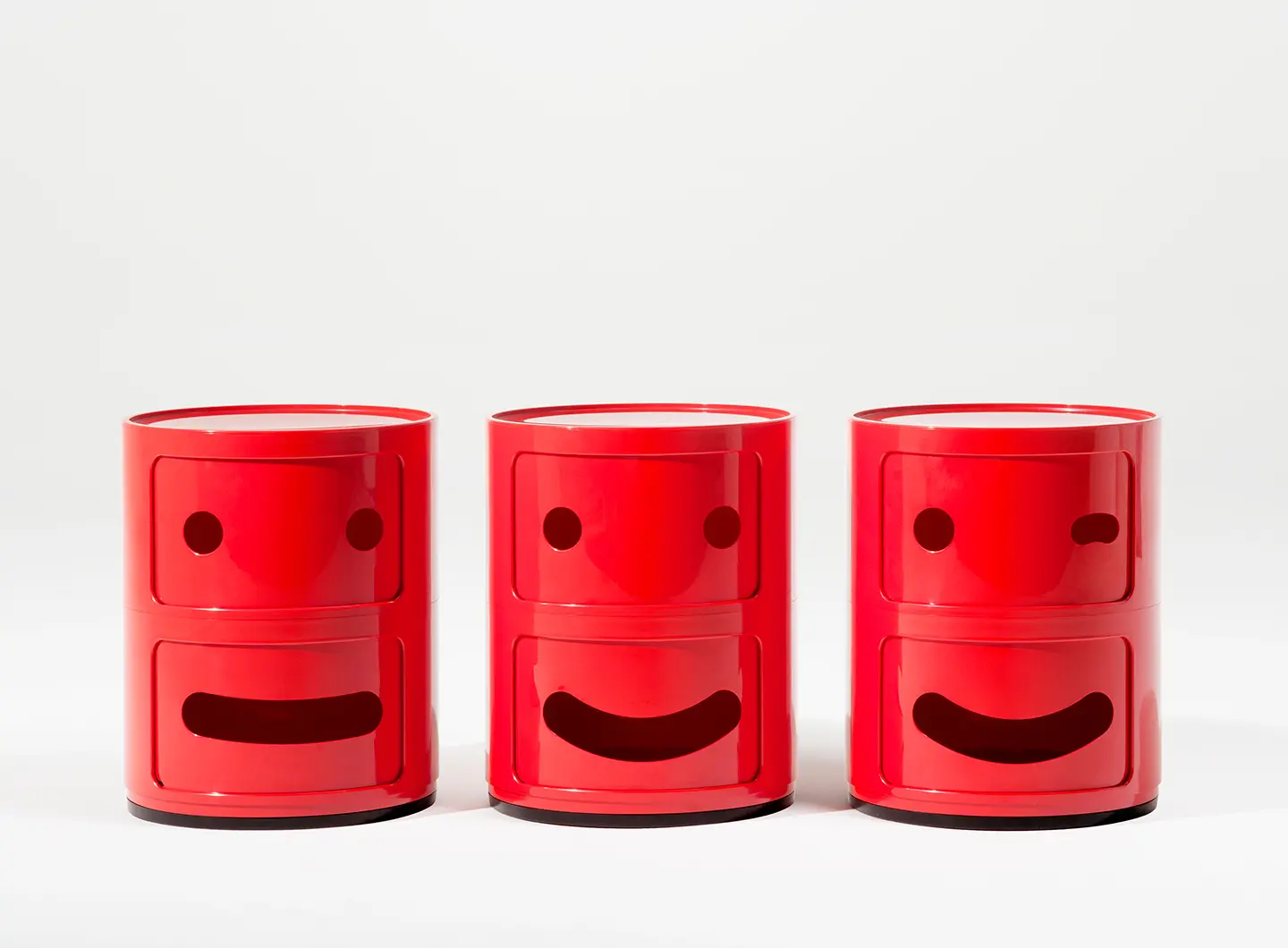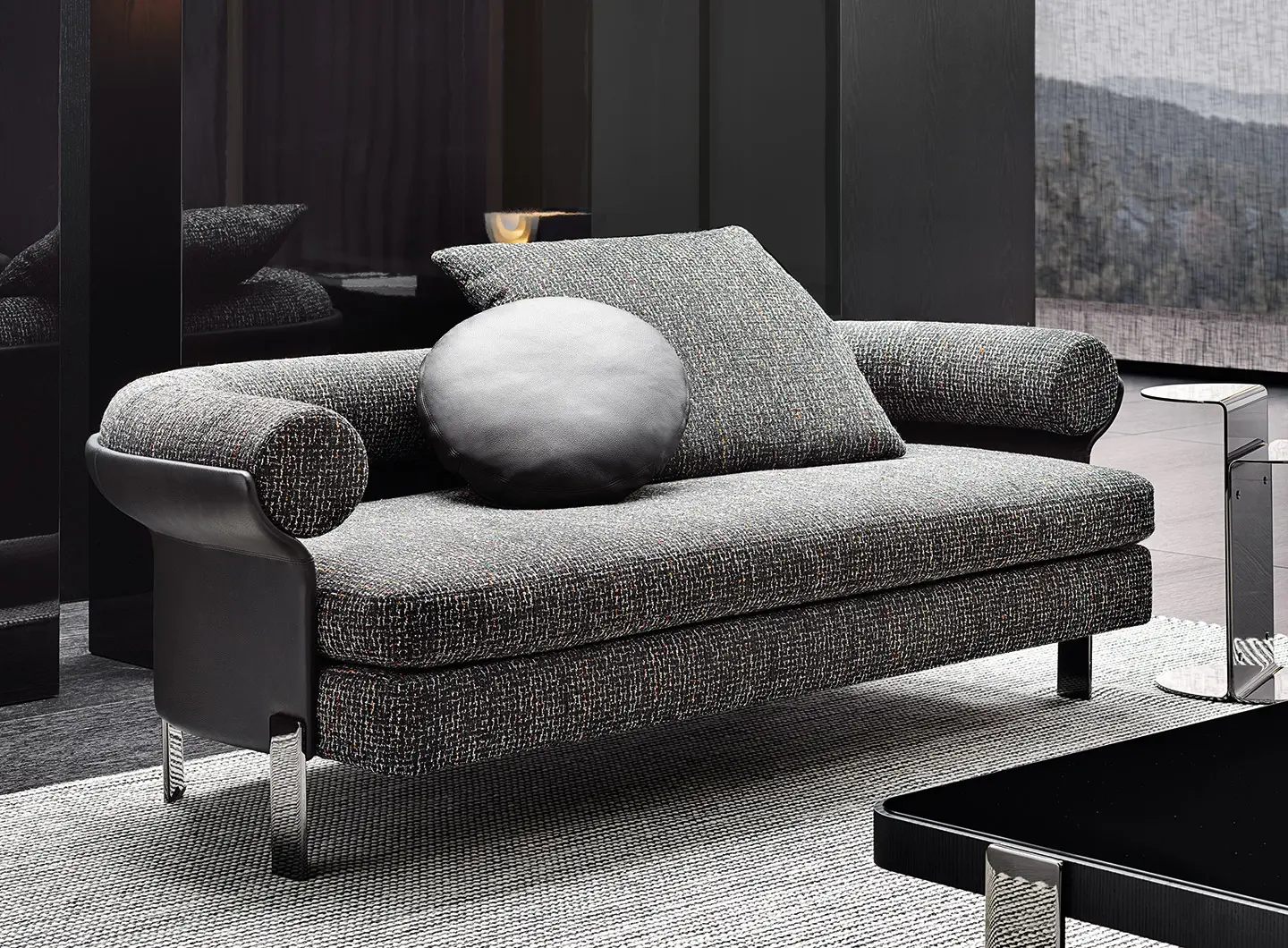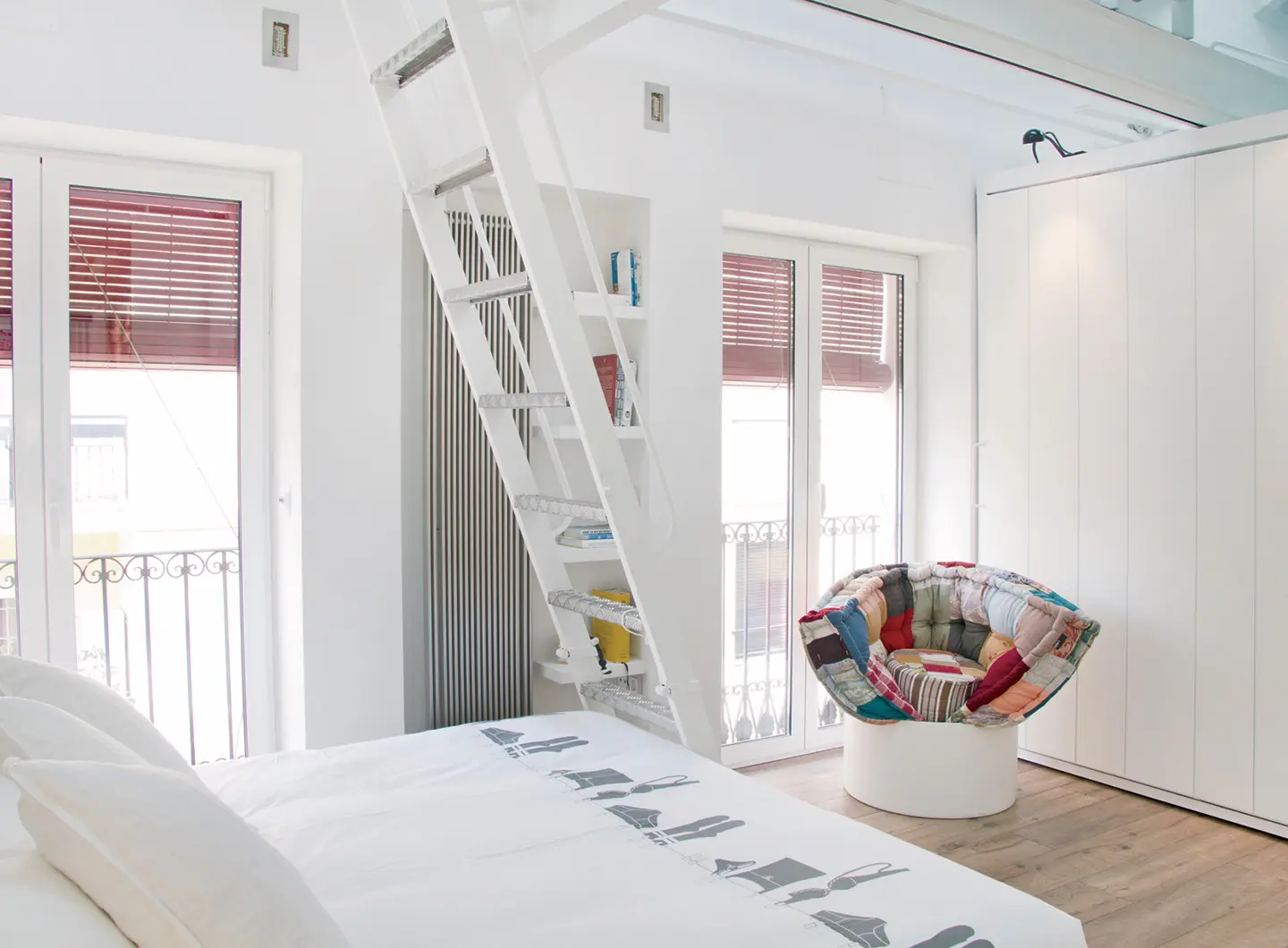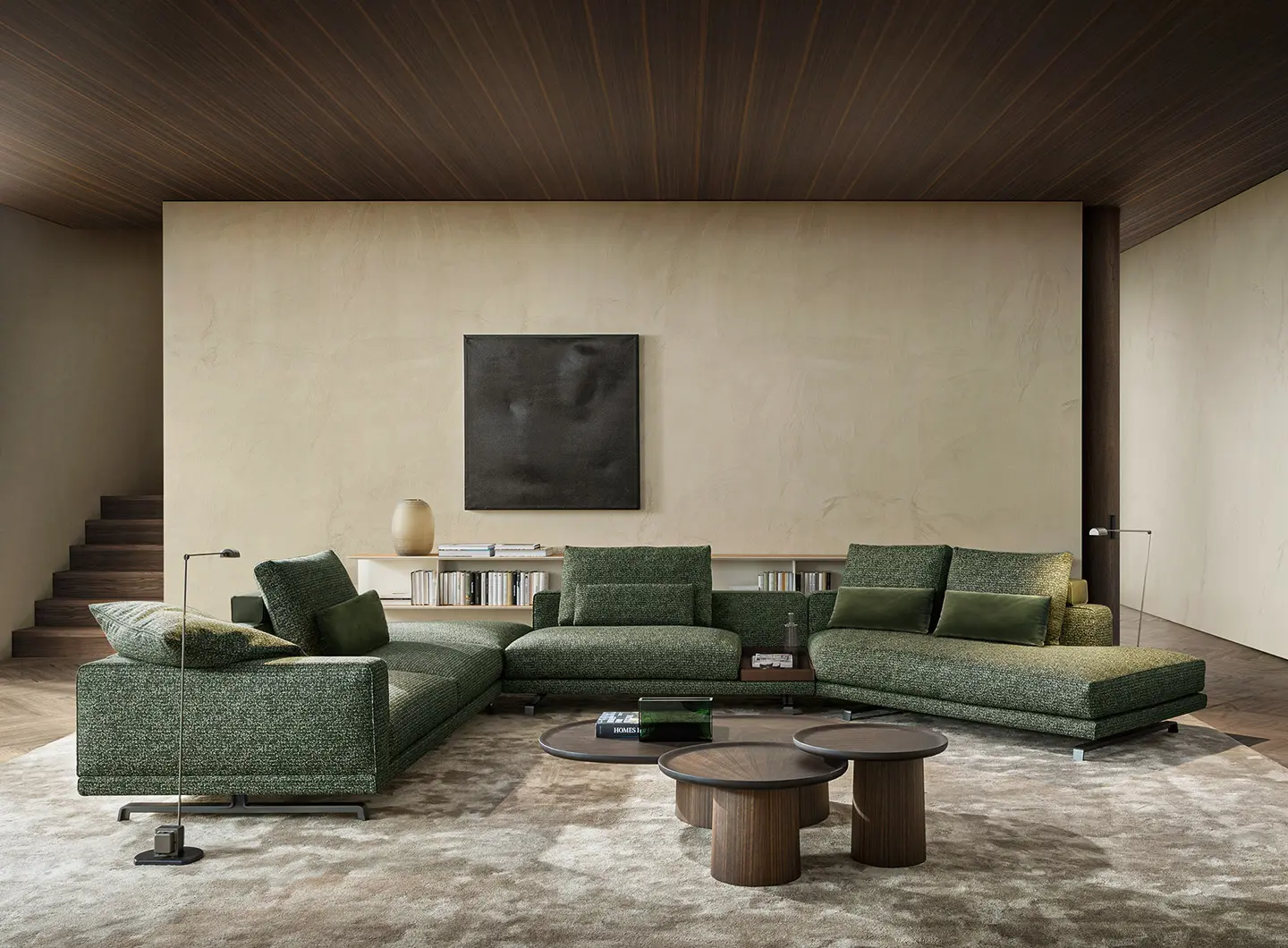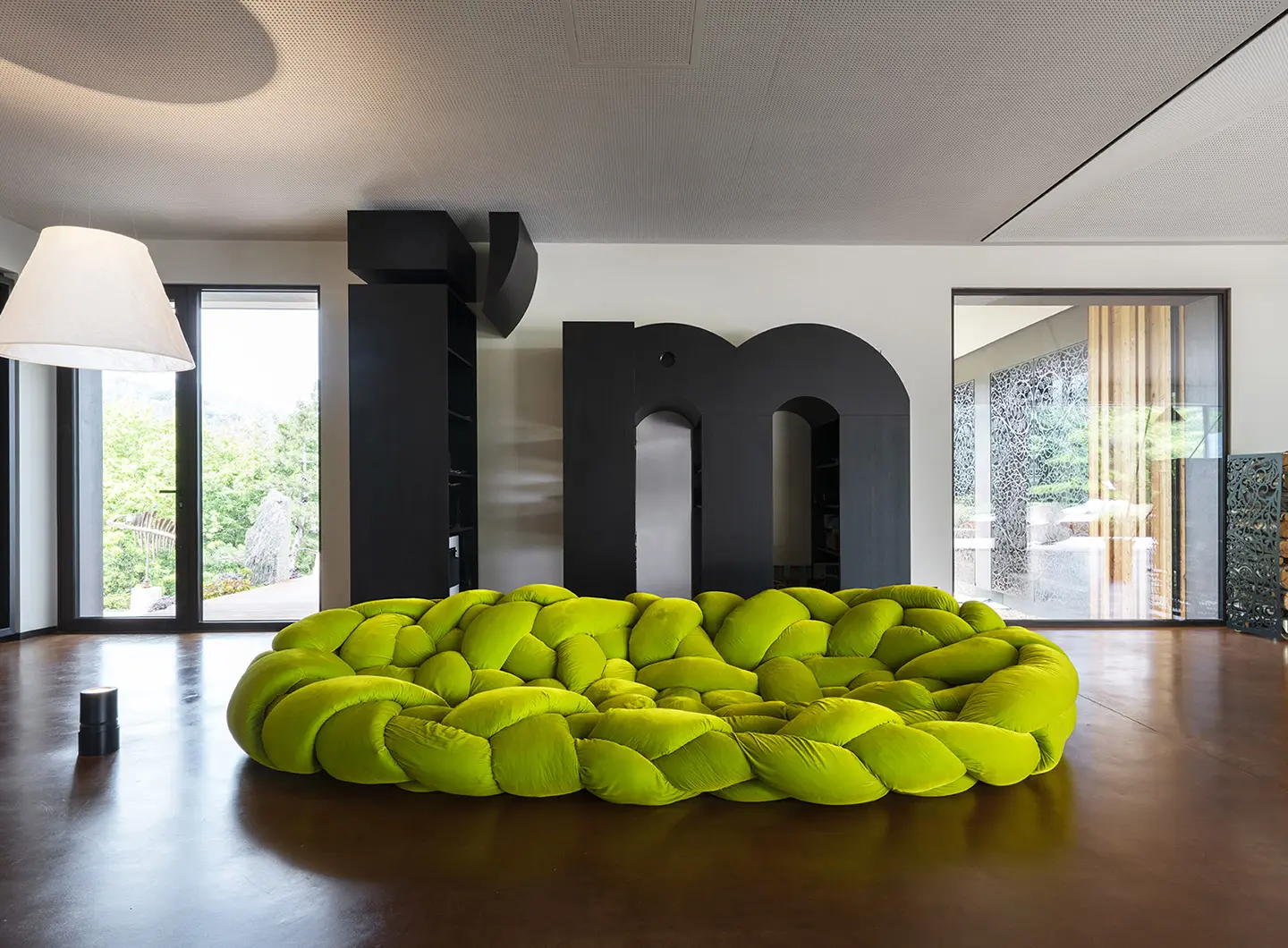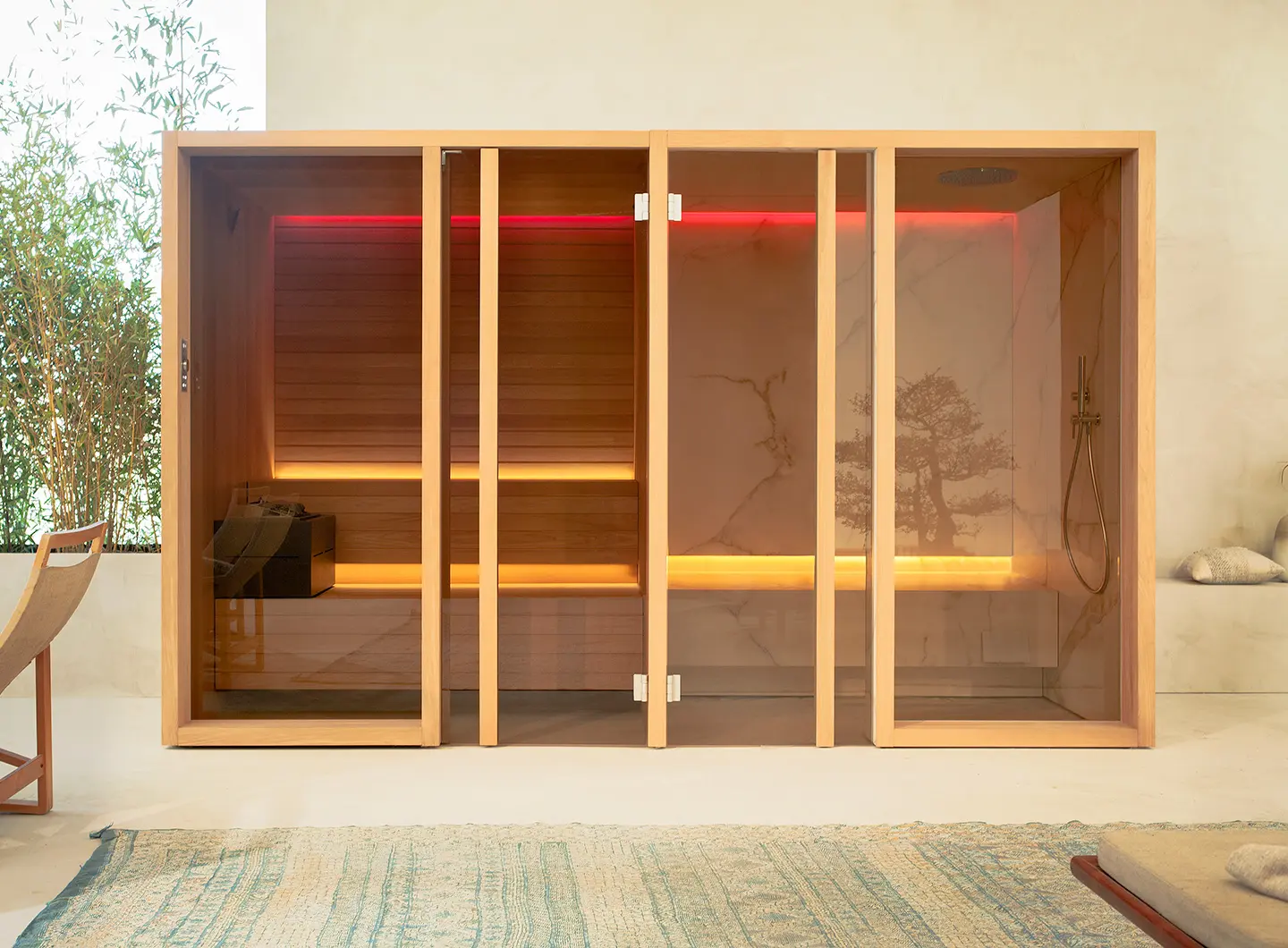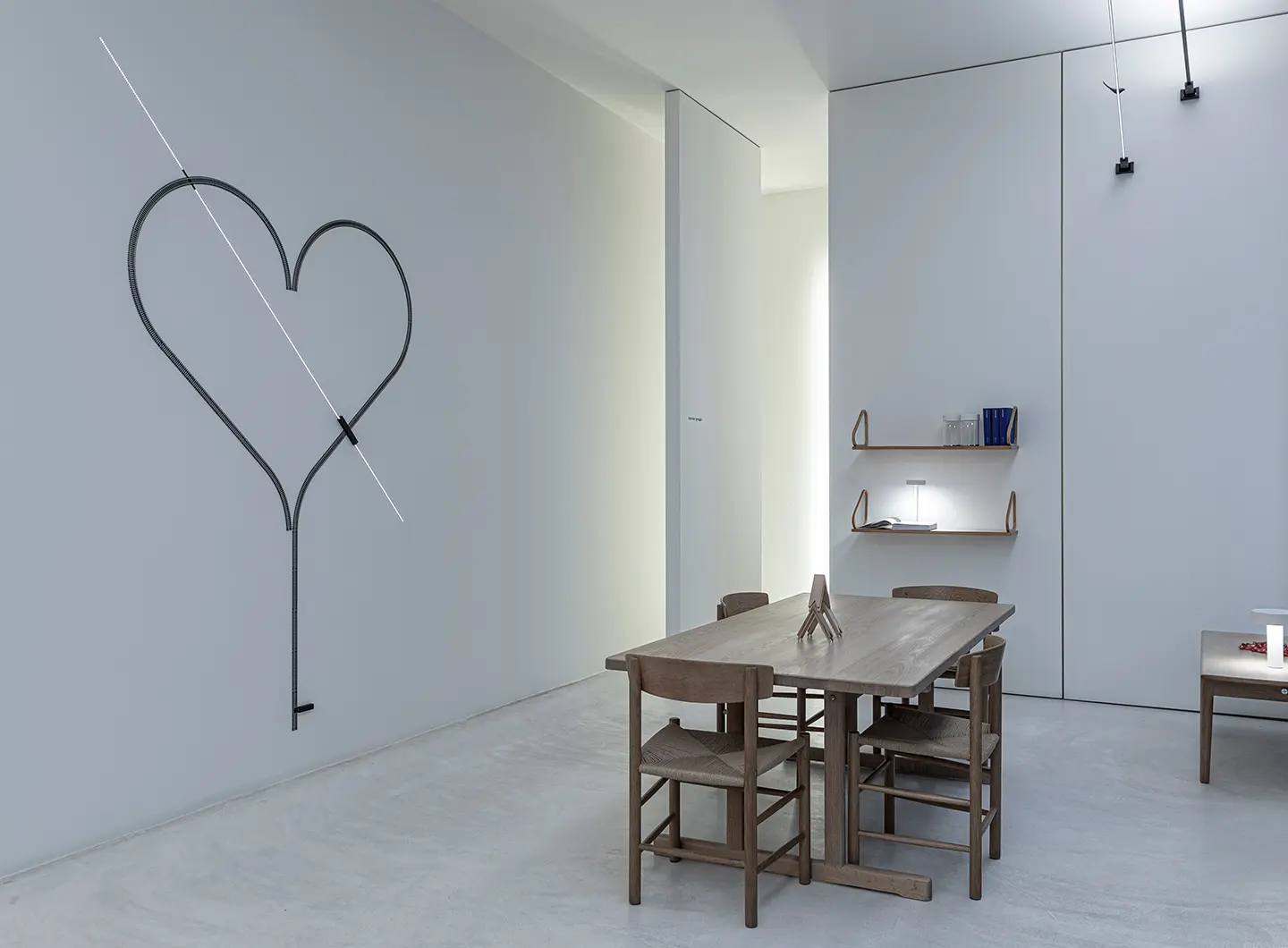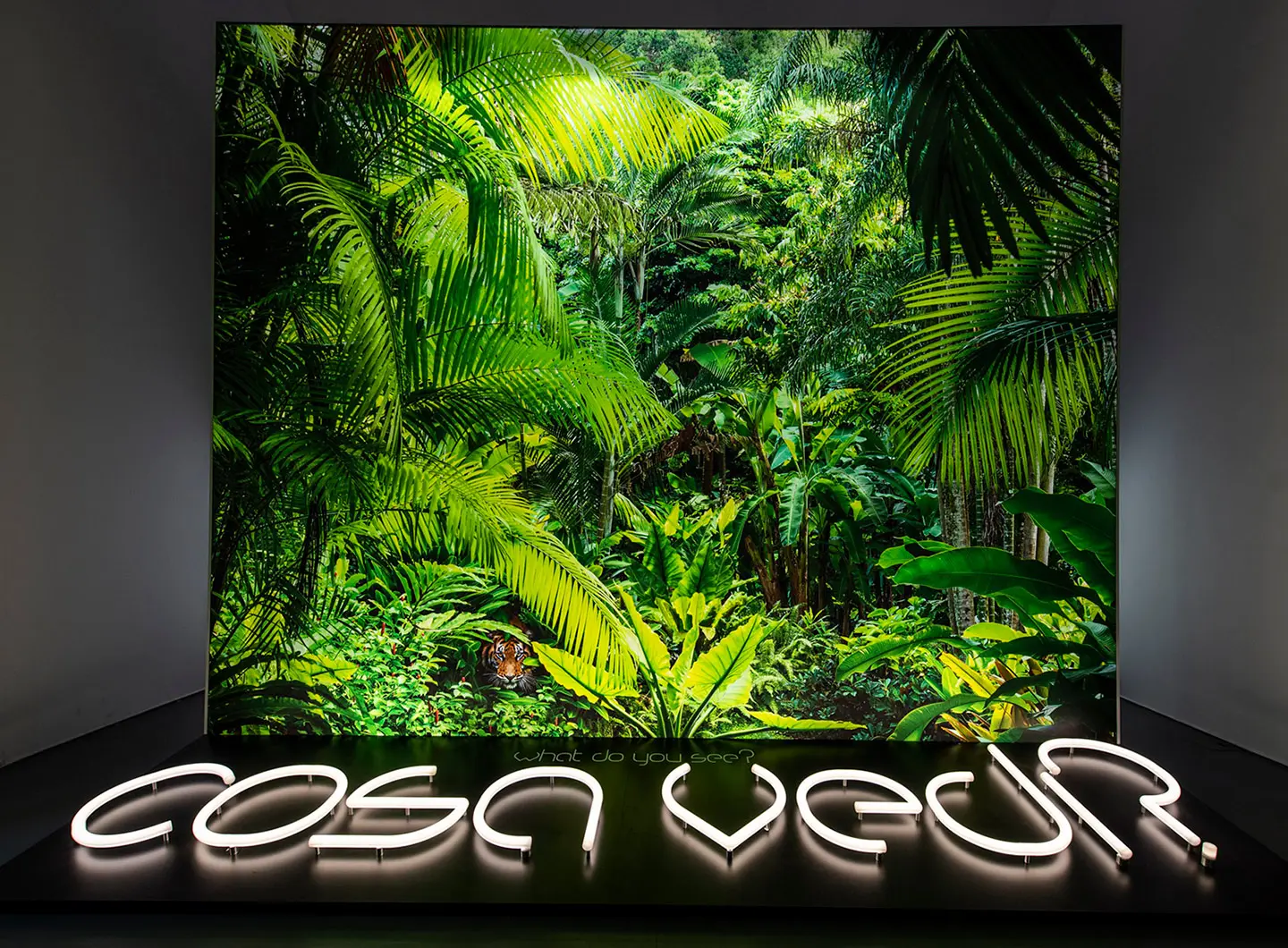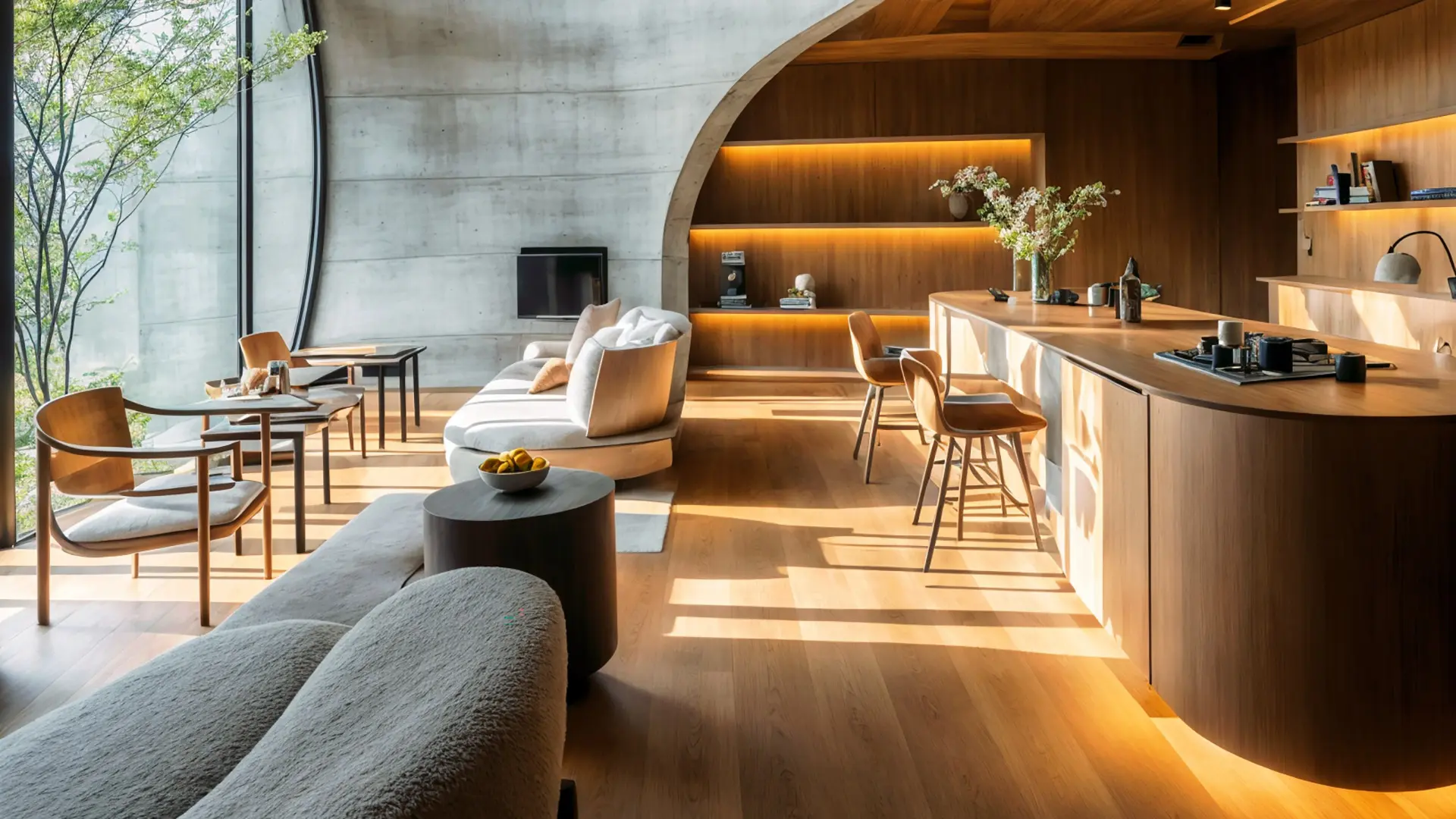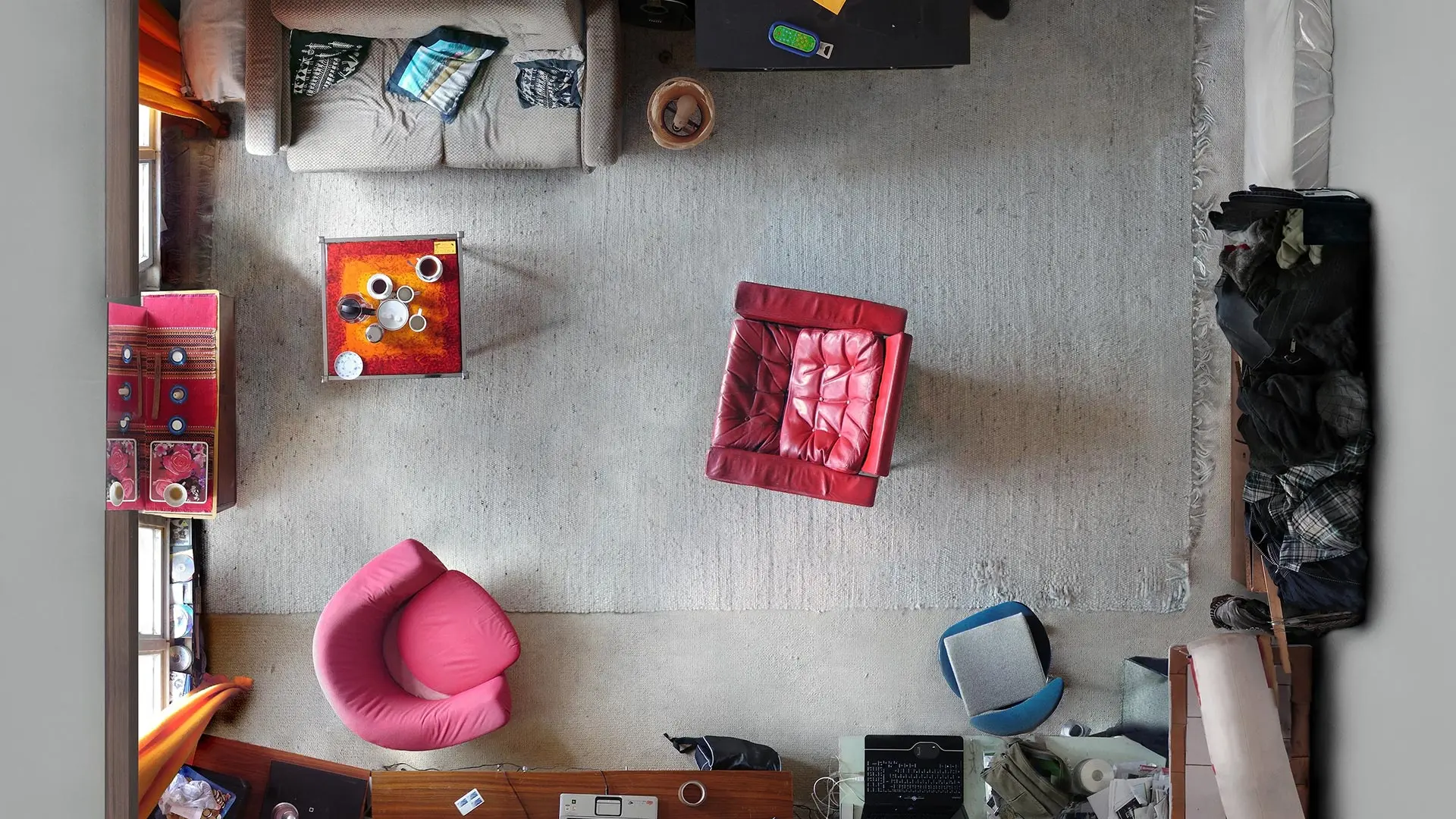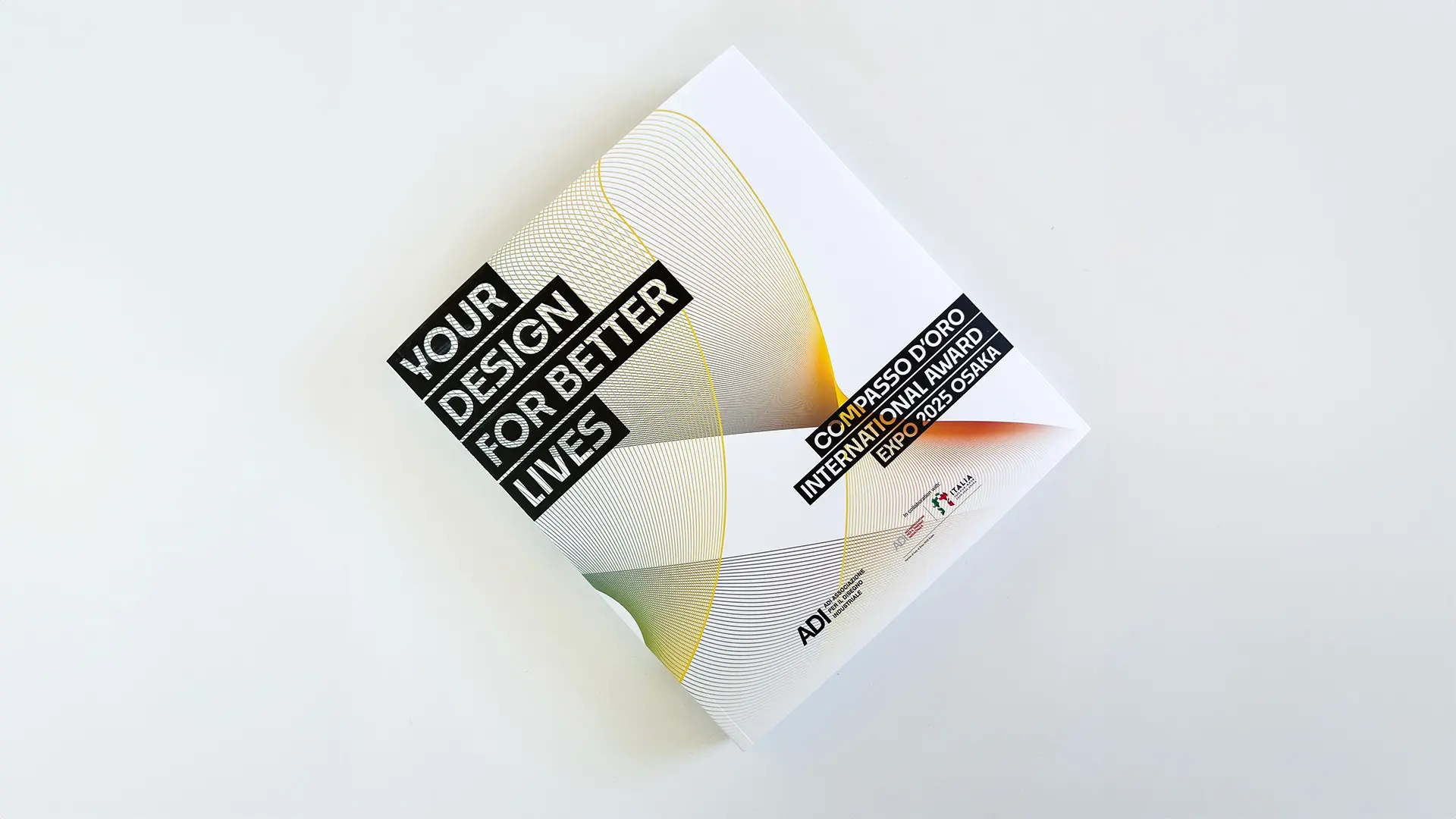Smart and sustainable purchases: how to make the most of the appliance bonus and how to apply. Requirements, amounts and limits to be aware of
Positive thinking
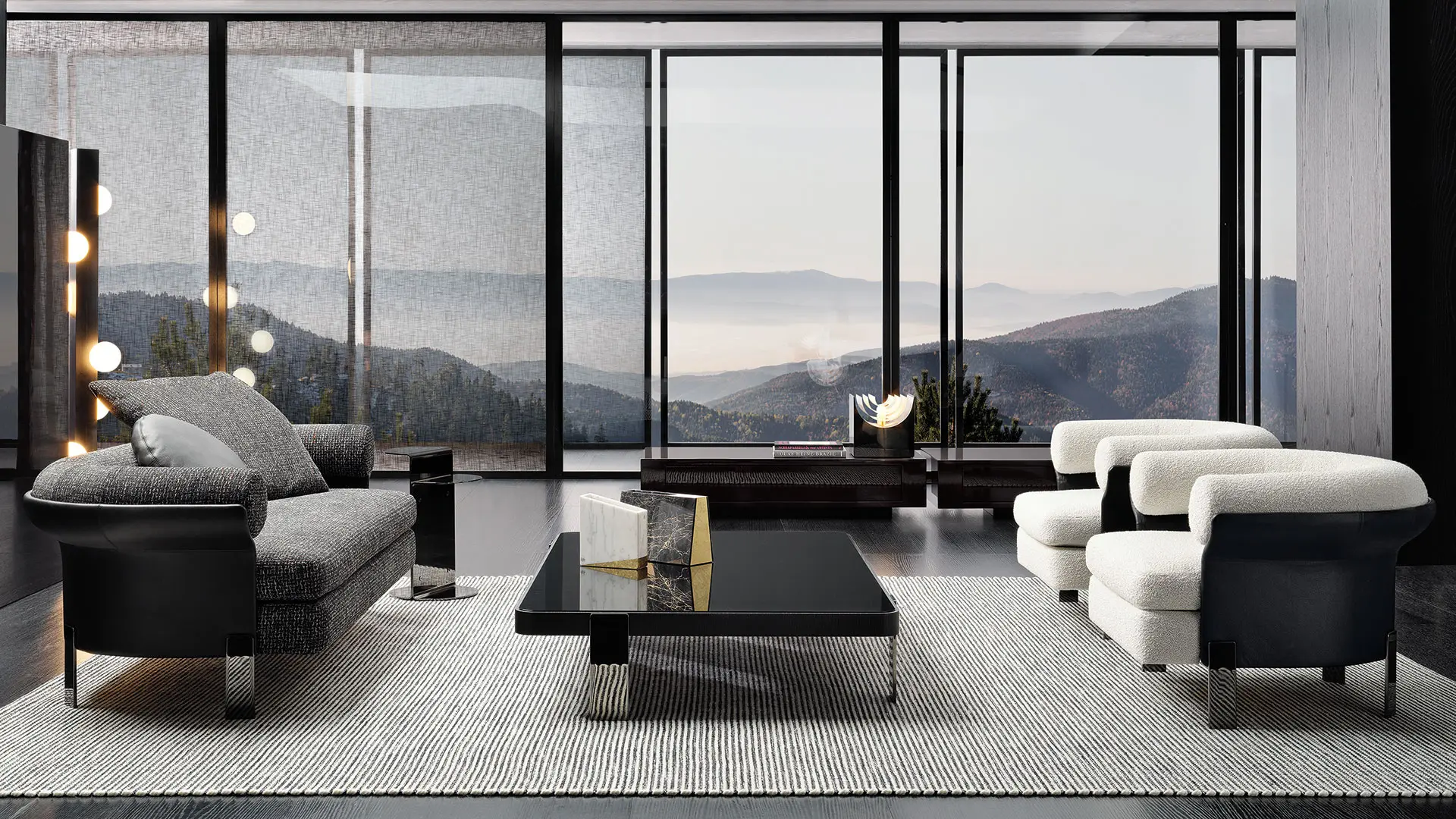
Mattia by Rodolfo Dordoni (Minotti)
A practical guide to positive thinking: what books to read, which designs to go for when planning calm spaces, outdoor activities, mindfulness exercises and citronella.
Let’s admit it. We all need Harry. Prince Harry. In person, preferably. The reason is now in the public domain, as he has taken on the role of Chief Impact Officer for a Silicon Valley start-up. The perfect figure to teach us how to improve our mental wellbeing, develop resilience and confidence in the future after the huge knock-back of the pandemic.
Can one learn to be happy, though? Allan Percy, author of Conecta con la Felicidad (2007), La Escafandra del Optimista (2013) and the more recent Nietzsche for Stressed Out People and Oscar Wilde’s Coaching (2020), certainly believes so. Ruth Whippman, journalist, filmmaker and author of The Pursuit of Happiness (2020) isn’t quite so sure. In her book she says that being honest with ourselves and learning to accept negative emotions is a more constructive approach. Oliver Burkeman also came to the same conclusion - after reviewing books on happiness for The Guardian for many years, he developed a certain penchant for “positive thinking” and maintains in his book The Antidote: Happiness for People Who Can’t Stand Positive Thinking (2013) that, when self-imposed, being over-optimistic leads to frustration and unhappiness.
However, attempting to acquire a change of perspective in order to gain a bright and vital view of the world does allow us to retrieve our motivation, adjust the way we move forward and take a more level view of the importance of things that may have gone wrong during the day. We therefore need to think of things that can help us change our attitude and mood while shut between our four domestic walls. Design is one. The design of our furnishings – which ought to make us happy and good-humoured or bring comfort, at least - because as we know, the way we perceive our space has a direct impact on our emotions.
If you think about it, though, this “happiness design” isn’t really so far-fetched. How could Jaimon Hayon’s Happy Hook for jackets and coats (Fritz Hansen) fail to raise a smile when you open the front door, and the same is true of Fabio Novembre’s Smile containers for keys and whatnot (Kartell), in which the round hole on the Componibili turns into a winking eye, in a nod to the emojis of today.
If it’s true that rounded shapes trigger positive reactions and transmit calm and equilibrium, what could be more relaxing than allowing oneself to sink into the enveloping and good-looking Mattia by Rodolfo Dordoni (Minotti) or into Huggy armchair (Lago), perfect at any time of the day?
Needless to say, as well as comfort, there’s colour to think about – green, for instance, is well-known for its calming effects. From a physiological point of view, this particular colour calms the nervous system and helps the heart relax and recharge, generating that feeling of serenity and positive energy that we notice when we are surrounded by it. That makes it the ideal colour for Octave by Rodolfo Dordoni (Molteni&C), a modular, multitasking and versatile sofa, designed to become the happy island of the domestic space, making its occupants feel protected and content. Fernando and Humberto Campana have gone for a lime green effect with Boa (Edra), a large, soft nest which, while incontrovertibly a sofa, is also a landscape, described by the two creatives as an invitation to total relax.
Natural materials – wood, stone and marble – are a real tonic for our minds and are ideally suited for use in the bathroom, the wellness room par excellence. Accordingly, Marco Williams Fagioli has designed Yoku SH – sauna, Turkish bath and shower – (Effegibi), with its distinctive vertical natural wood architectural elements, suggestive of forest immersion and conjuring up feelings of serenity and intimacy during hot baths. On the other hand, the Eclipse tub by Marco Di Paolo (Antonio Lupi) has been carved from a block of marble, the material qualities of the stone bestowing an enveloping sensation of peace and naturalness on the user.
There’s nothing like lighting for creating vitality-rich positive atmospheres. What is important is to do it with a dash of irony and originality. Accordingly, Davide Groppi has come up with Rail, a blend of utility and show, design and art, for a light-hearted approach to illuminating spaces. The rails of an electric train mark out imaginary landscapes in which the light serves to sketch other rails, other crossings, other graphics. The best, undoubtedly, is the heart-shaped configuration. Equally atmospheric, BIG’s Alphabet of Light for Artemide showcases a new font that evolves into a continuous, comforting light, creating shapes that can be harnessed for writing or expressing thoughts and emotions.
As if that weren’t enough, there’s no shortage of on top solutions. Mark Holton, co-director of the Cornell University Outdoor Education Centre, advocates climbing trees, while personal trainer and jiu-jitsu champion Simon Alebiosu recommends hula hooping – no matter what age or location for both activities. Clinical psychologist Anna Hutchinson believes walking alone to be the best way to feel happier, but the meditation and mindfulness exercises on apps such as Headspace and Calm are equally effective. Micro-gardening would appear to be the definitive recipe for a mega dose of dopamine, citronella being the plant of choice, its citrussy, cheerful scent conjuring up a ray of sunshine. According to the British horticulturalist, journalist and anchor woman Alys Fowler, that is.



